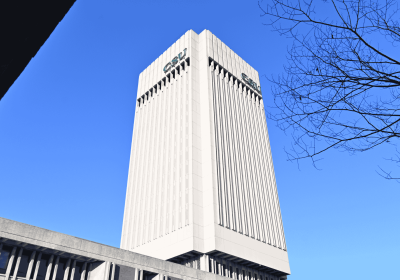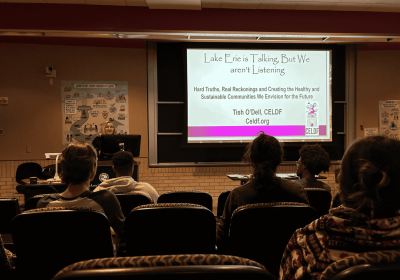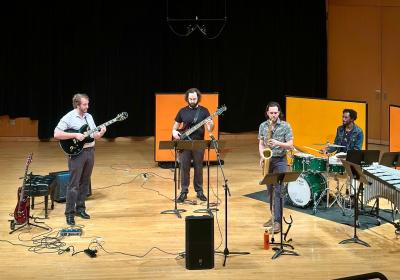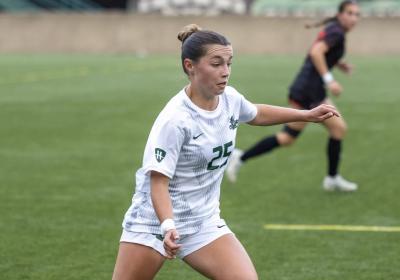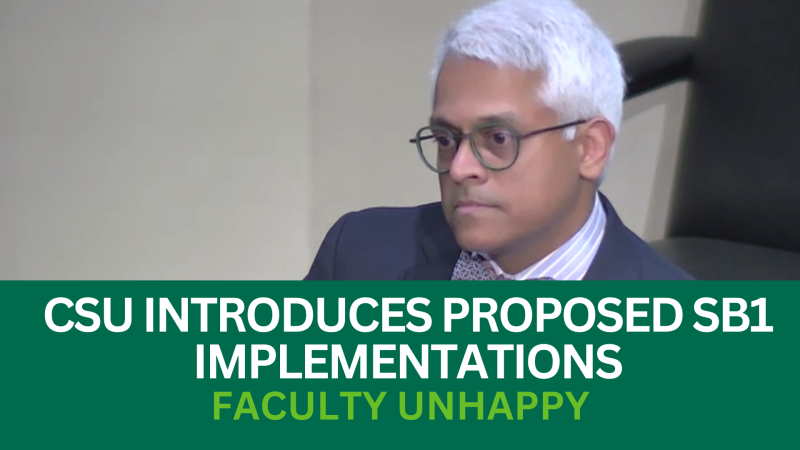
CSU introduces proposed SB1 implementations, faculty unhappy
During two faculty town hall meetings hosted by Cleveland State University, Provost Nigamanth Sridhar, Ph.D. introduced tenured faculty to increased workloads and greater supervision of their teaching, with scant concern for the demands of research. The CSU administration told faculty the board of trustees would oversee the new policy, which is the result of Ohio’s revised Senate Bill 1.
“I will just acknowledge that much of what I might say today, you might not like,” Dr. Sridhar said, opening one of the meetings Sept. 2. “But that’s just the state of where things are.”
The town hall meetings – the second one was Sept. 5 – were to give “direct and detailed information regarding the university leadership’s implementation plans and next steps (for SB1),” according to an email earlier sent to faculty.
The Ohio Department of Higher Education (ODHE) and the “chancellor’s office,” of Ohio's public university system will oversee implementation of SB1 on campus, although the latter, referenced frequently in Sridhar’s presentation Tuesday, was not named once in the university’s communication.
It was probably a new name for most people attending the meetings, but CSU’s chancellor is Mike Duffey, who is the chancellor of the Ohio Department of Higher Education. Duffey’s role is to oversee the state’s two-year and four-year colleges and universities, along with Ohio Technical Centers. Additionally, he provides policy guidance to the Governor and the Ohio General Assembly.
According to Provost Sridhar, the following policies are due to be submitted to the chancellor by the end of the year after being approved by the university’s board of trustees.
Workload policy: the timeline for implementation
The first topic the meetings focused on was the university workload policy, a topic Sridhar said will “probably cause the most change in the way that we do things.”
Sridhar acknowledged that pertinent portions of the presentation were “copied and pasted from the law,” which detailed that the chancellor, jointly with the state institutions of higher education, shall develop standards for instructional workloads for full-time and part-time faculty.
Additionally, Sridhar prefaced the specifics by noting that “what you will see today will be affected by what the ODHE says” by Sept. 30, which is when the ODHE will complete the general workload standards.
Dr. Sridhar added that the information presented at the town halls was based on “initial discussions” that the university has been having with the chancellor’s office, and what the university “expects them to say.”
A key change SB1 introduces into how CSU works is that it will shift to the board of trustees the final say on faculty workload. Previously workload was enshrined in the collective bargaining agreement which the faculty union (the AAUP CSU chapter) and administration negotiate.
“We have a pretty decent idea of what we are planning to present to our trustees,” Sridhar said. “Then, we’ll finalize this policy after Sept. 30, after we hear from the chancellor.”
However, following Tuesday’s meeting, the AAUP CSU chapter wrote to its membership, saying the AAUP and the administration were far apart on the issue of workload and had not conceded the administration’s claims about the impact of SB1 on workload, tenure and retrenchment.
The Stater has reached out to the AAUP for comment, as CSU faculty are currently working without a contract and are in negotiations with the administration about workload. The negotiations were mandated before SB1, but are being heavily impacted by its passage.
The board policy must be posted for 30-day public comment before the board adopts them, according to board of trustees policy, an important timing aspect regarding the Nov. 13 committee meeting in which Sridhar expects the board to adopt the policies.
Workload: expectations
With the implementation of SB1, what faculty do is under a microscope.
“Workload is an assignment of how somebody should be spending their time,” Sridhar said. “Over the next year, we should be thinking about forward-looking plans and making sure that we’re allocating time in the appropriate way.”
Sridhar prefaced his remarks by saying workload assignments should not be “evaluations of past performance,” and added “that is how we have been using workload on this campus for a number of years. We’ve always thought about how workload is assigned for next year based on what a faculty member has had a record of accomplishments over the last three or five years or so on.”
Indicative of the direction CSU is headed, the initial plan looking forward is to increase the teaching load for tenured and tenure-track faculty, who will be expected to teach six courses per year, up from the current five. And the new teaching workloads will no longer be based on credit hours, but on courses.
“We will not be talking about it in the context of credit hours,” Sridhar said. “Naturally, there’s a question in everybody’s mind as soon as I said that about ‘what happens if my department has a bunch of 4-credit-hour courses?’ We’ll have to deal with that and address it in an equitable manner.”
Previously, when the university asked faculty to do additional work, the credit hours from that additional work could be put into a “credit bank” to be used in place of workload credits. The credit bank will be eliminated under the new workload policy.
Despite the increased workload, the research expectations for faculty are not changing with some wriggle room possibly in service.
“We will say all tenure-track faculty members are expected to maintain an active research scholarship, and creative activity program,” Sridhar said.
During the question and comment portion of Friday's town hall, Stephen Gingerich, professor of Spanish at CSU, described how when he chose to work at CSU, it seemed that the university affirmed the importance of research.
“It seemed to me that CSU affirmed the ideal of the scholar-teacher, and the way that my research would enrich my teaching,” Gingerich said. “When we’re talking about doing more teaching, clearly from the workload, we’re looking at less research, so less enrichment of our teaching by our research. I don’t know anybody who thinks you can teach more and still teach to the same standard with the same quality.”
Sridhar responded that he and CSU President Laura Bloomberg, Ph.D., each a scholar and researcher in their own right, understood the challenge.
“Every chance that I get, I do trumpet that teacher-scholar nature of our faculty,” Sridhar said, adding that President Bloomberg does so in every opportunity she gets as well, with trustees constantly being reminded of the importance of research.
“Is that effective?” Sridhar said regarding the praise of faculty research to the board. “Clearly not, so, I’ll leave that there.”
Vickie Coleman Gallagher from the management department, Monte Ahuja College of Business, emphasized the impact of decisions on an organization’s talent, noting that best business practice would not go down the road SB1 is taking education in Ohio.
“In the top organizations in this country and in this city, including places like Sherwin-Williams, (they) would be thinking about the impact of decisions and the process of decisions on the morale and an attraction and a retention of talent,” Coleman Gallagher said. “We are heavy on talent. When I see the laws and the rules and the ratios, I wonder to myself, 'What are we doing to make sure our talent feels appreciated so that we can do our best in what we were hired to do?' and what we spent decades trying to be good at.”
“I don’t sense any of that with what this legislature is pushing,” Coleman Gallagher said, "which is sad, because they want us to be run like a business. But the best businesses in this country wouldn’t do this to their employees and to their talent.”
Faculty Evaluations
Another change is new questions to be implemented into faculty evaluations, some of which are completed by the students at the end of each semester. SB1 empowered the chancellor to create a set of questions that must be included in all teaching evaluations students complete.
The new questions are:
- Does the faculty member create a classroom atmosphere free of political, racial, gender and religious bias?
- Are students encouraged to discuss varying opinions and viewpoints in class?
- On a scale of 1 to 10, how effective are the teaching methods of this faculty member?
Additionally to these questions, the special committee the university created to evaluate the student evaluation instruction instrument provided a completely different set of questions to use instead of previous questions. The new set was not provided at the town hall.
The administration was blunt that it believes SB1 opens faculty, including tenured faculty, to termination if their annual performance reviews do not meet the minimum standards set by the board. How the administration plans to assess annual performance when research can sometimes take years to complete and publish has yet to be determined, although Sridhar said faculty would be involved in the post-tenure review process.
“As far as I know, we’re the only public institution that’s choosing to use a faculty review process in this post-tenure review,” the provost said. “We think that having faculty voice in this is extremely important.”
Another concern is that SB1 could threaten the role institutional knowledge plays in effectively managing a university, as tenured faculty are often expected to take on a heavier load in running the university as their time at and knowledge of the institution increases.
“Traditionally, when someone is no longer having an active research program, they 'contribute in other ways through increased teaching and that sort of thing,'”said Dr. Robert Whitbred, chair of the School of Communication. He added that he had read SB1 and did not see in it any requirement of removal of tenure.
“My concern is the big picture," Whitbred added. "When word gets out, and word will get out, that there’s a mechanism for removing tenure at a university, which goes against 150-200 years of tradition, I’m not sure how it’s going to work as far as recruiting new colleagues coming into the university – as far as reputation, as far as people leaving who we may not want to leave.”
Sridhar responded that every one of the 14 public universities in the state of Ohio will have “this exact same provision.”
Retrenchment
The provost said the university was developing a retrenchment policy, based on “reduction in programs and services because of enrollment decline, revenue loss, program changes or other fiscal pressures.”
“We are not saying this is something we want to exercise anytime soon, or ever," he emphasized. "But we’re required to write these policies and that’s how we’re putting these in."
“Any kind of retrenchment action will begin with a written plan from my office, from the provost. We will consult the faculty senate, but then – as with everything – the final approval of these goes to the board of trustees.”
Sridhar ended both meetings by encouraging the faculty to provide feedback and ask questions through an online form. The finalized policy will be posted for the 30-day public comment period after Sept. 30, when the university hears from the chancellor.


